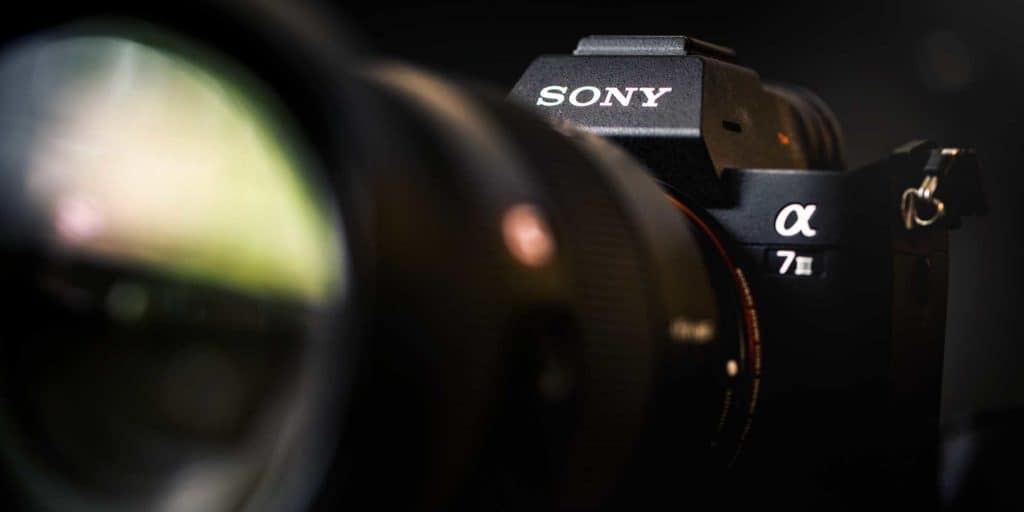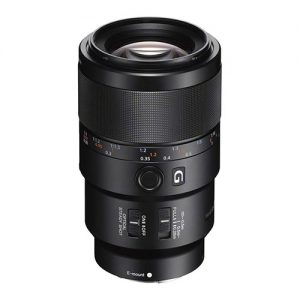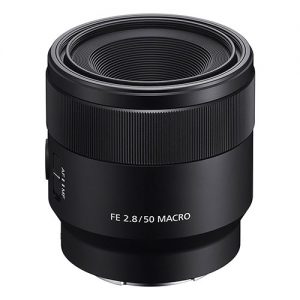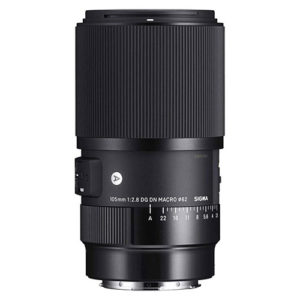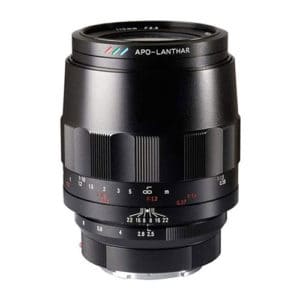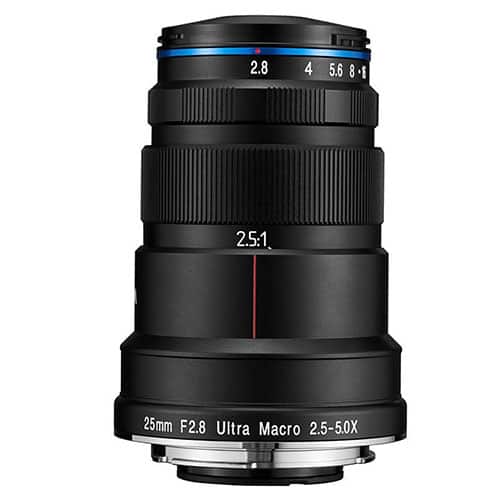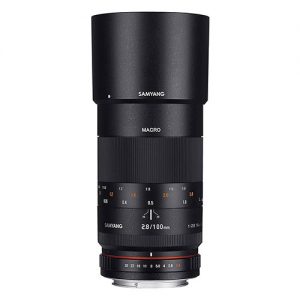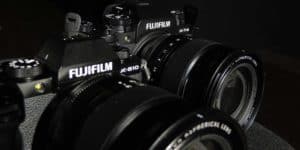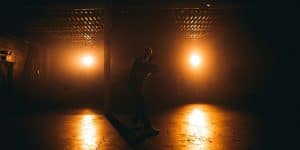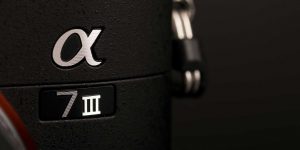Sony’s flagship a7-series cameras are some of the best mirrorless bodies you can get, and they have the added benefit of having many lens options.
You can expand your options even more with adapter tubes, but the native Sony FE-mount list of options is really impressive.
Even for something as specialized as macro photography, there are many great lenses to choose from on the A7III.
Table of Contents
Best Overall Macro Lens — Sony FE 90 mm f/2.8 Macro G OSS
The Sony FE 90 mm f/2.8 Macro G is a 1.0x magnification prime lens that looks purpose-built for macro work.
The company put a lot of effort into getting this lens right, and it paid off. The built quality is what you would expect from a Sony G Lens—it’s excellent. The lens also has Sony’s Optical Steady Shot (OSS) built-in, which, when coupled with the a7 III’s sensor stabilization, will reduce the shutter speeds you can use by as much as five stops.
The nine-blade aperture delivers super soft and pleasing bokeh, and the autofocus is fast and accurate.
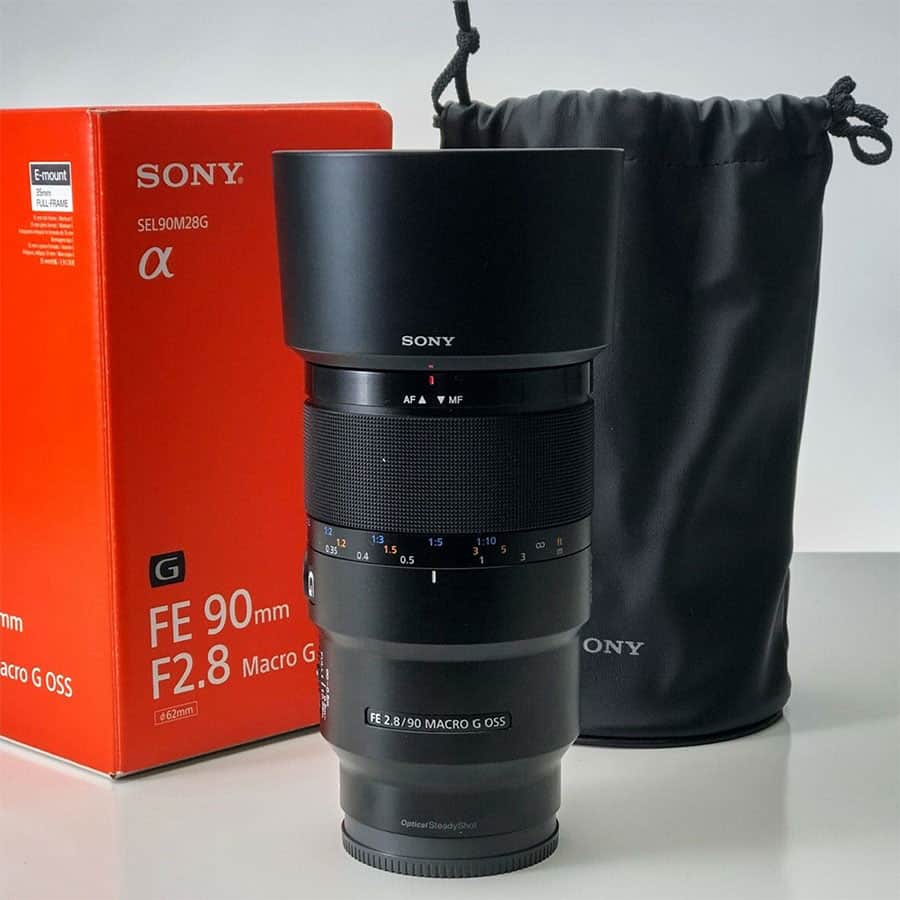
The lens has a few other smart features that I love for macro photography. There’s a focus lock button right on the lens barrel so that you can use the autofocus successfully more often.
It also has a large focus barrel, which can be moved forward to switch instantly to manual focusing, a nifty feature that means you won’t have to take your eye out of the viewfinder.
The autofocus also has selectable zones, one of which locks it in the macro range of 0.28 to 0.5 meters. That keeps the autofocus working fast and reduces focus hunting.
As an all-around portrait-range prime lens, the 90 mm stands out as one of the best you can own for the a7-series.
The fact that it can double as a serious macro lens is a huge bonus, making this a versatile addition to any Sony owner’s camera bag. The minimum focus distance is 0.92 feet or 0.28 meters, and the lens weighs 21.3 ounces or 602 grams. It accepts 62 mm screw-on filters.
Best Normal Macro — Sony FE 50 mm f/2.8 Macro
Sony also makes a 50 mm “normal prime” that produces a 1:1 magnification ratio.
I wouldn’t recommend this lens as your one-and-only macro.
But if you’re hunting for a wide-angle macro, or you need a nifty-fifty and want it to be able to do double-duty, this is an interesting lens.
Its primary benefit is its compact size—it’s the perfect go-anywhere travel lens. The 50 mm performs for everything from portraits to street photography to landscapes, and this one does macro too. Nifty, indeed!
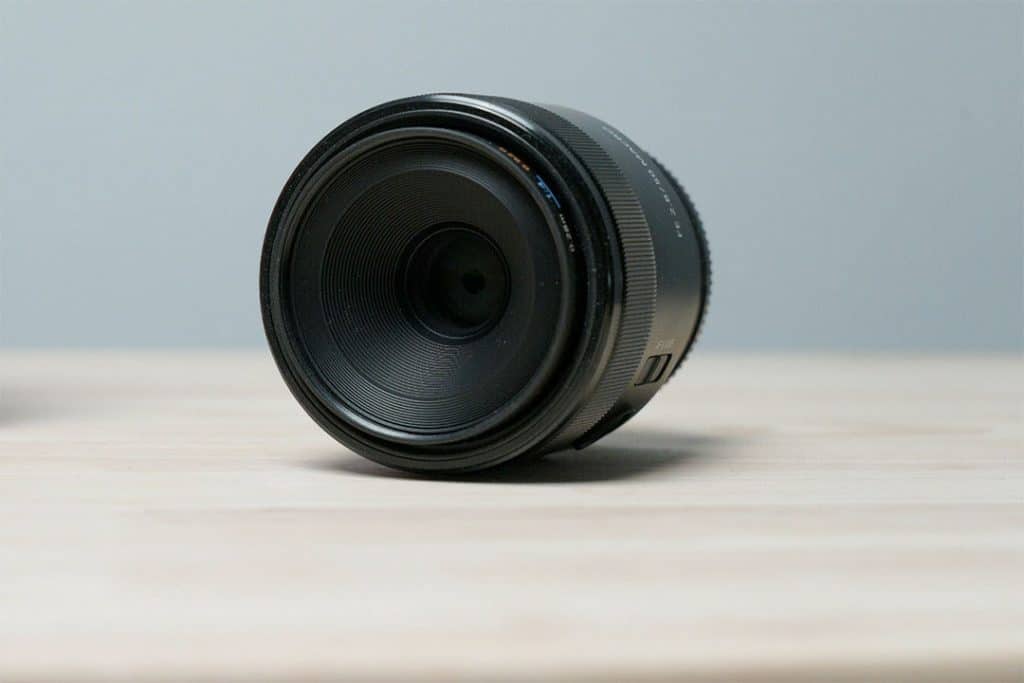
The Sony FE 50 mm’s minimum focusing distance is 0.53 feet or 0.16 meters, which is not worth writing home about.
You aren’t filling the frame with insects, small flowers, or jewelry.
The lens also lacks OSS stabilization, though the a7 III makes up for that internally. In short, this is a great lens that produces beautiful images, but its usefulness for macros alone is limited.
It’s a go-anywhere, do-anything lens that can get a few details and close-ups along the way.
Best Value Macro — Sigma 105 mm f/2.8 DG DN Macro Art
Sigma’s Art-line lenses have been some of my favorites for a few years now, and more and more of them have been adapted to work on the Sony E-mount.
Their DG-series lenses are full-frame, so they work with the entire sensor on the a7 III.
These are the same lenses used on the DSLRs from Canon and Nikon but adapted for the Sony mounting system.
The 105 mm f/2.8 Macro is a gorgeous lens that will not disappoint, and it holds a few advantages over even the Sony FE 90 mm.
For one, it’s about 25 percent less expensive. For another, it’s extra 15 mm of reach means you can get even closer to your subjects.
The Sigma 105 mm is a 1:1 lens with a minimum focusing distance of 0.295 meters. The autofocus has a limiting switch, like the Sony lens, but the Sigma seems to be a little more sluggish and spends a little more time hunting for its target.
Video shooters will love the built-in option to de-click the aperture ring. The Sigma is a wonderful option if you need an all-around portrait-prime lens, and it does a fantastic job with macros.
If 105 mm is a little more reach than you want, another excellent option is the Sigma 70 mm f/2.8 DG Macro Art.
This lens is nearly identical to the 105 but with a slightly closer focus distance of 0.258 meters. Remember, though, that this benefit is mostly lost due to the reduction in focal range.
Highest Quality Manual Macro — Voigtlander 110 mm f/2.5 Macro Apo-Lanthar
If you want to go all-in on optics and skip the fancy electronics, check out the macro offerings from Voigtlander.
These ultra-sharp lenses are ruggedly built. Even though they feature manual focus and manual aperture control, they are chipped to allow for EXIF data and camera interfacing for in-camera stabilization.
The Voigtlander lenses are 1:1 macro lenses that are sharp from macro to infinity.
The lens cleverly utilizes a three-group internal floating mechanism to ensure sharpness.
It’s also compact, measuring just under four inches long and accepting 58 mm filters.
Voigtlander also makes a similar, though slightly faster, lens—their 65 mm f/2.
Probe-Style Macro Lens — Venus Optics Laowa 24 mm f/14 2x Macro Probe
Let your creative side go wild with the possibilities that this bizarre lens opens up.
This lens was funded on Kickstarter, with the idea of making the first consumer-grade probe lens. It has since become extremely popular for obvious reasons.
The lens can focus from 2:1 to infinity, and it features a unique bug-perspective wide-angle 24 mm lens.
This lens allows you to get close to your subject, with a minimum focusing distance of only 20 millimeters or 0.8 inches.
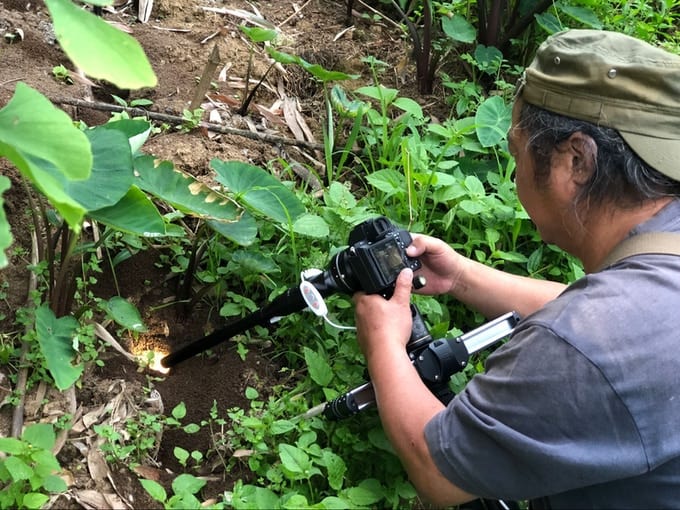
Laowa sells both a standard and a “Cine-mod” version that has geared focus and aperture rings.
There’s a built-in LED ring light at the barrel, and the entire barrel is waterproof. The LED requires a USB power pack to run since the lens has none. The pictures you can capture with this lens are unique, and if you’re looking to take your macro work to the next level, I can’t recommend this crazy looking lens enough.
But, and let’s be honest, this is a specialized tool. It has a limited f/14 and higher aperture, so using the ring light and high ISO settings are necessary.
As ungainly as it looks, the lens weighs just over a pound (474 grams) and measures 16 inches (408 millimeters) long.
High Magnification Macro — Venus Optics Laowa 25 mm f/2.8 2.5-5x Ultra Macro
How power macros are few and far between, but Laowa also makes a fully-manual 25 mm f/2.8 lens that will go to 5.0x magnification.
This lens produces results that look more like a microscope than a standard macro image.
You can get super close up with it, but it requires a lot of patience to use correctly.
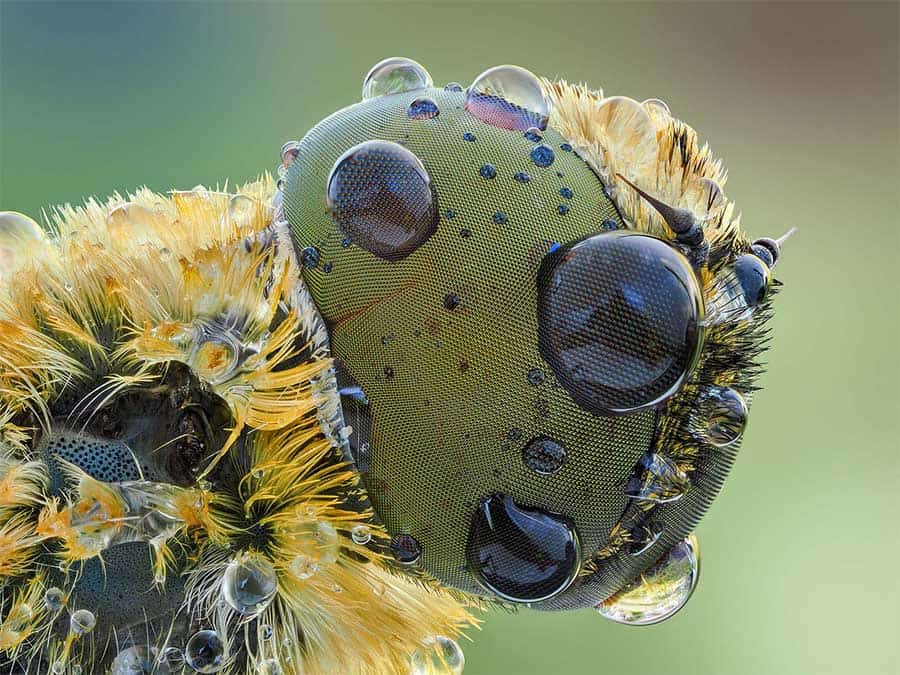
This isn’t a lens that you would use while handholding on a walk in the park since it will require some setup with a tripod and perhaps even a focus slider.
This lens is an incredible value for the build quality and the results that it can capture.
At 5.0x, the minimum focusing distance is 6.8 inches, giving a working distance of 1.6 inches.
Best Bargain Macro — Samyang 100 mm f/2.8 Macro
Samyang makes several lenses compatible with the a7-series, and the 100 mm f/2.8 Macro is an excellent example of their offerings.
Like others, it’s a fully manual lens offered at a bargain price. This lens isn’t meant to compete with the Sony FE 90 mm G or the Sigma 105 mm Art. It’s instead meant to be a viable alternative to a used lens.
For about the same price, you can get brand-new glass and a smooth focus mechanism. It’s built for your camera, and the optical quality and build quality are always pleasantly surprising.
The 100 mm macro has a 1:1 reproduction ratio and a minimum focusing distance of 12 inches.
It works well as a portrait prime, too, making it a versatile lens at a great price.
Sony A7III Owner's Macro Lens Guide & FAQ
What is Macro Photography?
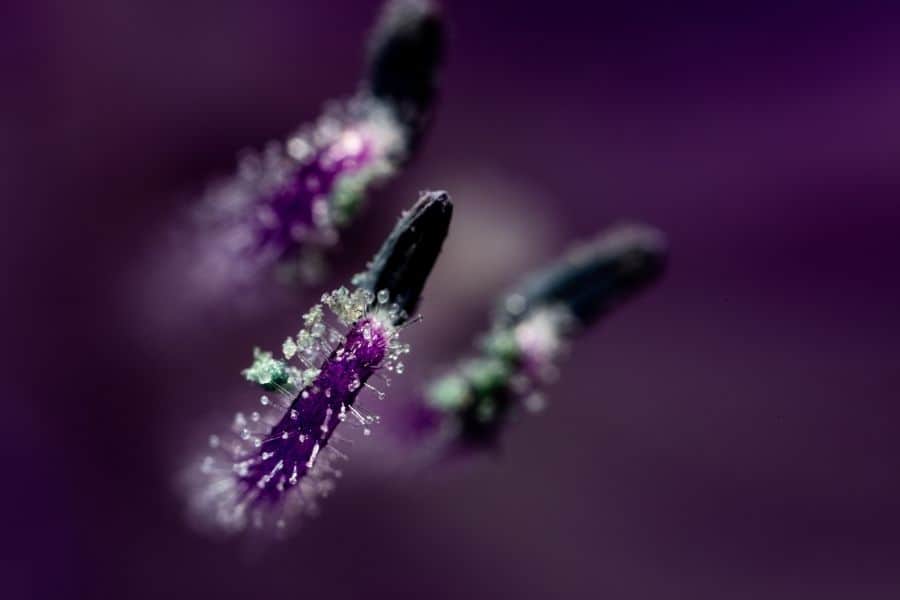
Macro photographs are taken of tiny objects, made to look huge when blown up on a print.
The most common close-up subjects are flowers, leaves, insects, or jewelry. To qualify as a macro, the subject is reproduced in life-size or even larger.
There are two ways that you can go about doing macro photography. You can get your camera very close to the subject to ensure that it will fill the frame.
Many lenses cannot focus close enough to something to create a 1:1 reproduction, so this doesn’t work with every camera and every lens. On that same note, many lenses are created strictly for macro images that can focus very closely.
Alternatively, you can use a long lens to zoom in on your subject. This technique works to a point, but the long lens introduces many other problems into the fold. Hand shake and blur are more significant problems, and a tripod becomes necessary.
You are still limited by the lenses’ minimum focus distance, meaning that you may wind up several meters away from your subject to get the shot.
Besides picking the right lens, other considerations need to be addressed for macro photography. Lighting the subject is a problem since if you are near it, you are likely to cast shadows over it.
Built-in flashes and shoe-mounted speed lights won’t work because their light is aimed at the wrong place and will cause shadows. Natural lighting is always best, but not useable in every case.
To solve these problems, unique lens-mounted ring lights are available. You can also use off-camera softboxes or diffused strobes.
Do You Need a Lens Specifically Built for Macro Photography?
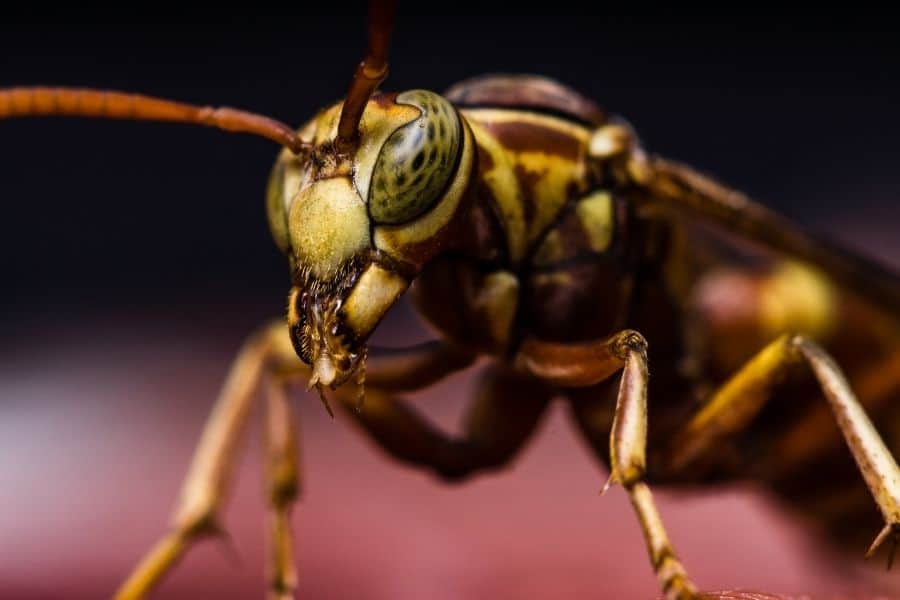
The first thing you need to get started in macro photography is a “macro lens” of some sort. By the strictest definition, a lens branded with the word “macro” ought to reproduce an image on your camera’s sensor that is a 1:1 life-sized reproduction.
You can certainly take pictures of the tiny world with a regular camera lens. You may find this works out for the occasional macro photograph, but it still depends on the lens you use.
Some lenses just can’t do this type of work, whether it’s because of their focal length or working distance. If you’re interested in getting up close and personal with various subjects, a macro-specific lens is what you need.
You’ll be able to focus on more scenes and a wider variety of subjects with it. Instead of being frustrated by pushing the limits of your lenses’ abilities, you’ll be in its happy zone.
Are expensive macro lenses worth it?
The answer depends on what exactly you want to photograph and in what conditions.
Unlike some other photography equipment, macro lenses are usually very sharp.
They benefit from a different lens design that results in a truly flat field of focus throughout the image. This contrasts with most lenses, which produce a field of focus that is curved.
So if sharpness isn’t worth paying for in a macro lens, what is? The maximum aperture is always essential to consider. A wide aperture gives you maximum control over your depth of field, which is powerful in macro work.
With it, you can make an ant’s eyes sharp and clear while the rest of the ant is blurred. It’s all about showing your audience what your main subject is, and it helps draw their eye to communicate your artistic vision better.
Wide-aperture lenses also have the advantage of better bokeh. Bokeh is the dreamy appearance that things in the background have when they’re out of focus.
Portrait photographers often rave about the bokeh one lens will produce over another.
It’s an important element in macros, too. The shape and appearance of bokeh can range from pleasing and soft to sharp, harsh, and distracting. The bokeh made by a lens comes from its internal optics, including the types of internal elements and the shape of the aperture blades.
Another item worth checking is how much chromatic aberrations (CAs) a lens produces.
High-end lenses are less likely to be plagued with these problems. CA is a digital artifact that occurs on images when there is a sharp contrast between light and dark areas.
It appears on the final image as ghosting that is sometimes called color fringing. It’s caused by a lens whose optics cannot focus all color wavelengths of an image at the same point.
Some CA can be removed or reduced in post-production, but it’s always best to avoid it from the beginning. Bargain lenses are the most likely ones to suffer from this problem, but some high-end ones can surprise you in a nasty way, too.
Can a Macro Lens be Used Normally?
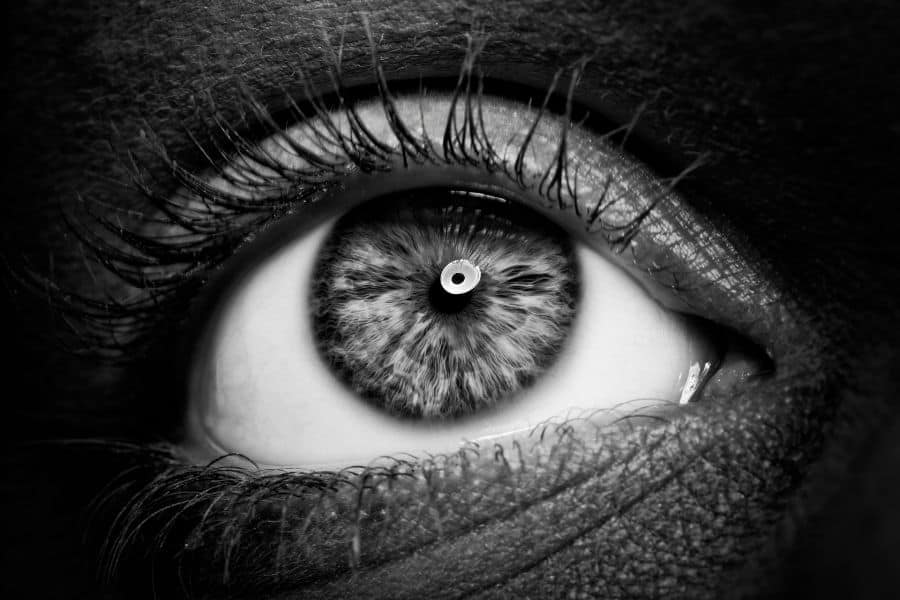
With all of this discussion about what makes a macro lens special, it’s worth noting that most of these lenses have no limits in focusing on infinity.
Most “macro” lenses are double-duty lenses that will serve you just fine for everyday use and macro shooting. Instead of being lenses designed for close-ups, per se, they are regular lenses that have the added ability.
The exceptions to this rule are lenses are macro lenses that are purpose-built for the sole task.
These lenses cannot, by definition, focus to infinity since they could not reproduce this at 1:1 anyway. The lenses in this category are unique and are the exception rather than the rule.
What Do I Look For When Shopping for an E-mount Macro Lens?
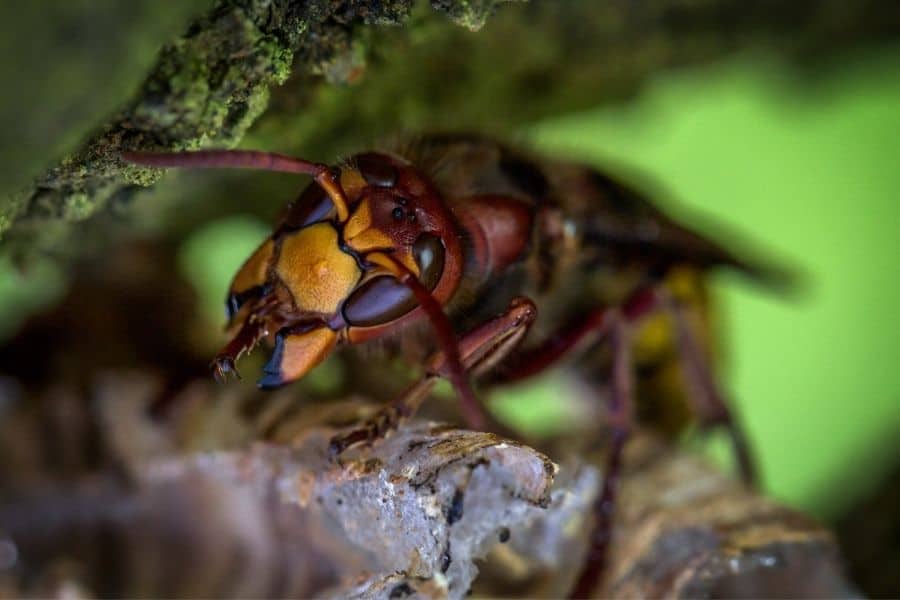
The most crucial factor to look for in a macro lens is its reproduction ratio. A true macro should be able to make the subject life-size on the sensor of your camera.
After that, you can enlarge it as much as you like on your computer screen or wall. The ratio is sometimes referred to as the magnification, where true to real life would be 1x.
To get more magnification, more specialized lenses are needed. These are usually macro-only lenses that can go much higher, some as much as 5x magnification.
Looking at the reproduction ratio is a contrast to the normal lens selection criteria of focal length.
The focal length is still significant, and just like with other lenses, it controls the field of view of a lens. On a full-frame camera like the a7 III, it’s unusually to produce a “macro” image of 1:1 with a lens less than 50 mm. Nifty-fifties are where images begin to appear life-sized.
You may see many lenses designed for APS-C sensors in the 30 mm range since these are equivalent to 50 mm in full-frame (sony a7iii’s sensor).
The focal distance of the lens is a useful consideration when framing your image. Rather than considering it in terms of field of view, as a landscape photographer would, the actual difference will be more about the appearance of objects in the frame.
A 50 mm lens will make items appear life-like, while a telephoto or long lens will tend to compress objects together.
Both have an appeal in macro photography. The compression and distortions found from a long telephoto often help pile more subject matter into the frame.
For example, it might fill the frame with an insect while showing a minimal amount of the background. On the other hand, a wider lens will bring out the flower that the insect is walking on, along with some elements in the far background.
The working distance is another essential macro lens factor. It’s the measurement from the lenses’ outer element to the subject that’s in focus.
It’s a little different than the minimum focusing distance since you would measure that from the sensor.
The physically longer the lens, the less the working distance will be.
If you’re imaging bugs or animals that might be spooked by you getting too close, a very short working distance would need to be avoided.
Another important distinction is whether or not you need an automatic lens. Focusing on macro objects is notoriously difficult, and even with the best autofocus systems, you will need to fine-tune it for many shots.
Macro photographers give up trying after a while and just manually focus all the time. If you’re looking for a macro-only lens, autofocus isn’t necessarily something worth paying for.
If you need an everyday lens for your A7III that also does macro, you’ll want a lens that quickly switches between auto and manual focus.
What Focal Length is Best for Macro Photography?
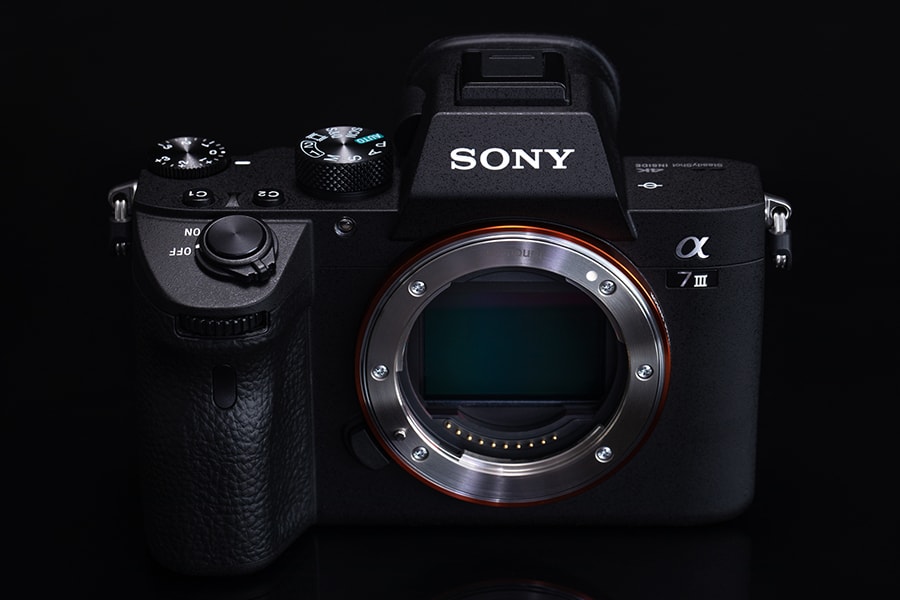
Macro lenses are roughly divided into three focal length ranges—short, midrange, and long. Short macros are useful for a walk-around lens that is also occasionally used for macro.
These are between 50 and 85 mm, and while they can produce some gorgeous images of flowers or details with the a7iii’s full frame sensor, they can’t get very close to tiny subjects like insects.
Their advantage lies mostly in being able to set up a wider-angle scene, and they may be better at capturing backgrounds that a tighter lens.
To fill the frame with your subject, you may have to get so close to the subjects that you wind up casting shadows into the frame.
Midrange lenses are usually a better compromise for macro photography. With focal lengths between 85 and 150 mm, these lenses provide enough reach to fill the frame with your subjects, yet also enough maneuverability to be able to capture a wide range of subjects.
You can zoom in on average size insects and still get a little background. They are also versatile enough to do product photography of small objects like detailed shots of watches.
Long macro lenses, with focal lengths of 150 mm or more, are pretty rare. These sort of tight lenses have the best useable working distance since you can be farther away from the subject, but they also create a disconnect between subject and photographer.
The limited light available means a high risk of hand shake, so tripods and extra lighting are must-have items.
You may notice that no zoom lenses have been mentioned. While some zooms advertise themselves as macro-able, in reality, their optics don’t allow for a true macro experience.
A zoom lens may give you the ability to get a good close up, but in the demanding world of macro photography, the results aren’t consistent enough to make any of them a great choice.
How Do I Focus a Macro Lens?
Focusing on macro lenses is one of the biggest challenges you’ll face. Autofocus systems seldom nail the area precisely the way you want, so fine-tuning with manual focus is the only way to go. On the a7 III, the focus peeking tool is your best friend. With it, you can get the focus perfect every time.
Avoiding camera shake is the next big challenge when it comes to macros. If you are hand-holding the camera, an optically stabilized (Sony OSS or “Optical Steady Shot”) lens is the best way to ensure good results.
They allow you to shoot with slightly lower shutter speeds than you otherwise would be able to. Ensure that your a7 III’s IBIS sensor stabilization is also switched on.
As with other forms of low-light photography, a tripod and a remote shutter release are even better options.
This doesn’t help if the subject moves, though, and that’s often the problem with macro subjects. Bugs walk around, and flowers move in the slightest breeze.
What about lighting, though? You can use off-camera flashes and softboxes to shed light on the situation, which will increase your shutter speeds. Diffusers are great for macro work since shadows can be a problem.
On-camera flashes and shoe-mounted speed lights don’t work for macros, though they will cast shadows in the frame and are not optimized to work so close up.
There are many specialty-built macro lighting options, like LED ring lights that mount to your lens. These provide the best flash option for dark situations. Some macro lenses even have LED lights built-in.
Conclusion
The a7 III is an excellent camera for macros, and there are plenty of great lenses available for it. Luckily, the camera and its mount have matured to the point that all sorts of exciting products are coming out that make macro shooting more fun and interesting.

